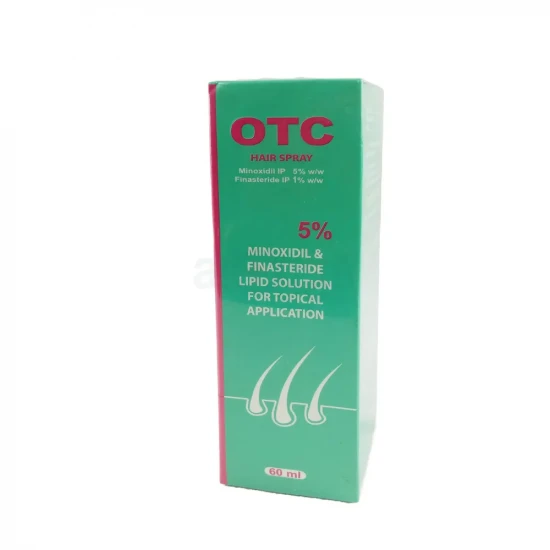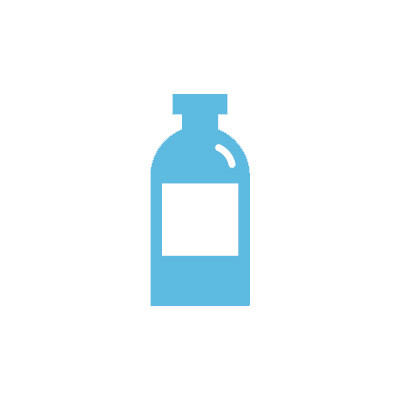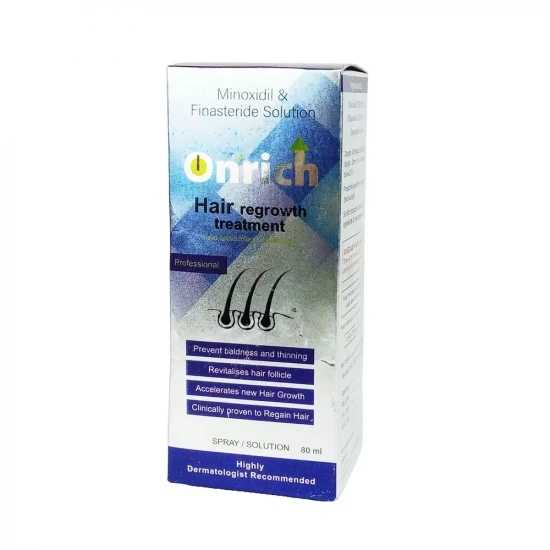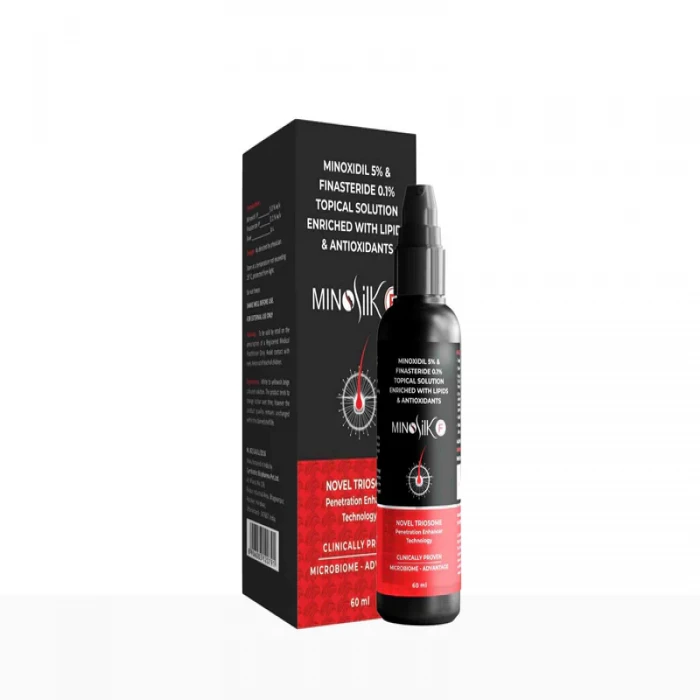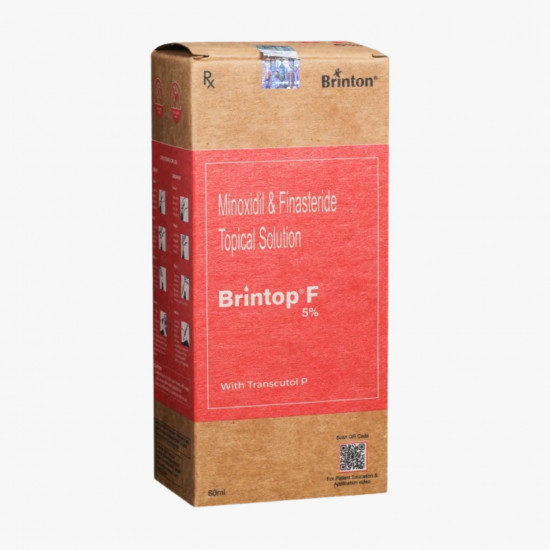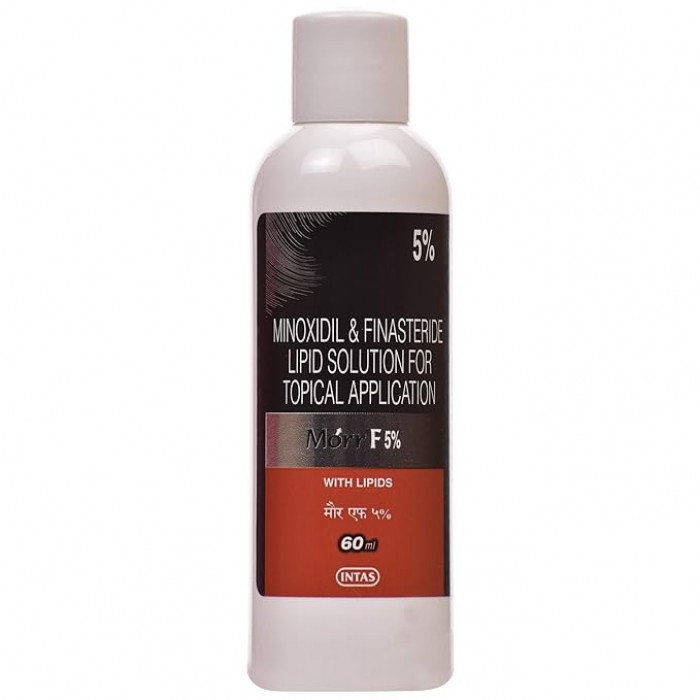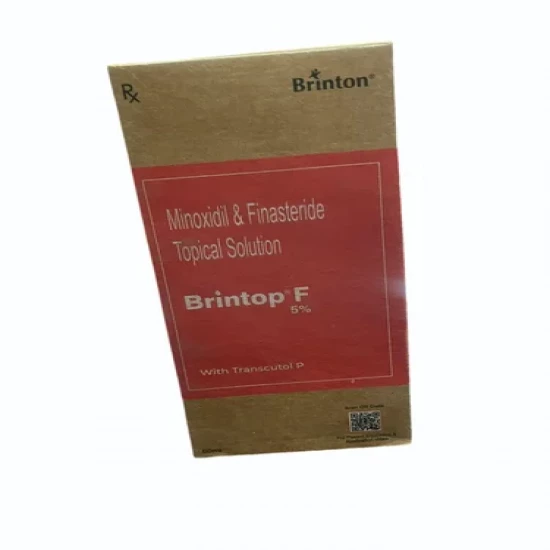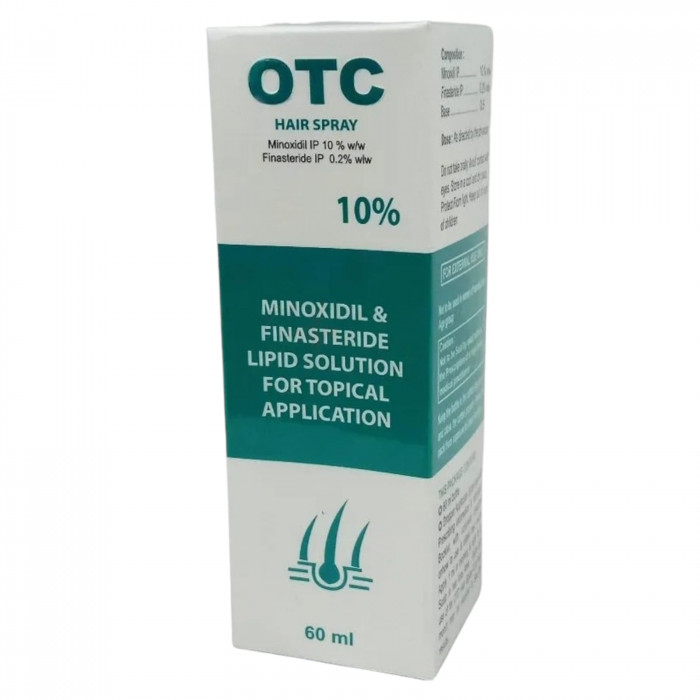
✔ 100% Authentic Product
👁️ Currently Viewing 8717
(Minoxidil+Finasteride)-(10%+0.2%) is used in the treatment of Hair Loss.
Discount
Price: ৳ 1,287
MRP:
৳
1300
1%
Off

100% Genuine Products, Guaranteed

Safe & Secure Payments, Always

Fast, Secure & Efficient Delivery

Proper Packaging
 Cash on Delivery - All over Bangladesh
Cash on Delivery - All over Bangladesh Regular Delivery - 12-24 Hours, Dhaka City* Charge Tk.39-59
Regular Delivery - 12-24 Hours, Dhaka City* Charge Tk.39-59 Regular Delivery - 24-48 Hours, Other Cities* Charge Tk.99-110
Regular Delivery - 24-48 Hours, Other Cities* Charge Tk.99-110
 ফ্রি ডেলিভারিঃ - ৯৯৯ টাকা+ অর্ডারে, ঢাকা
শহরে
ফ্রি ডেলিভারিঃ - ৯৯৯ টাকা+ অর্ডারে, ঢাকা
শহরে ফ্রি ডেলিভারিঃ - ২৯৯৯ টাকা+ অর্ডারে, ঢাকার
বাহিরে
ফ্রি ডেলিভারিঃ - ২৯৯৯ টাকা+ অর্ডারে, ঢাকার
বাহিরে
100% Genuine Products, Guaranteed
Safe & Secure Payments, Always
Fast, Secure & Efficient Delivery
Proper Packaging
 Cash on Delivery - All over Bangladesh
Cash on Delivery - All over Bangladesh Regular Delivery - 12-24 Hours, Dhaka City* Charge Tk.39-59
Regular Delivery - 12-24 Hours, Dhaka City* Charge Tk.39-59 Regular Delivery - 24-48 Hours, Other Cities* Charge Tk.99-110
Regular Delivery - 24-48 Hours, Other Cities* Charge Tk.99-110 ফ্রি ডেলিভারিঃ - ৯৯৯ টাকা+ অর্ডারে, ঢাকা
শহরে
ফ্রি ডেলিভারিঃ - ৯৯৯ টাকা+ অর্ডারে, ঢাকা
শহরে ফ্রি ডেলিভারিঃ - ২৯৯৯ টাকা+ অর্ডারে, ঢাকার
বাহিরে
ফ্রি ডেলিভারিঃ - ২৯৯৯ টাকা+ অর্ডারে, ঢাকার
বাহিরে
✅ Description:
Minoxidil+Finasteride is a combination drug primarily prescribed for the treatment of alopecia, addressing hair loss concerns. This medication aims to stimulate hair growth and impede the progression of balding, particularly in cases of androgenetic alopecia (male pattern hair loss), a condition characterized by permanent hair loss on the scalp leading to baldness.
The combination consists of two active components: Minoxidil, functioning as a vasodilator, widens blood vessels and opens potassium channels, facilitating oxygen, blood, and nutrient supply to hair follicles. This helps prevent cell death and encourages new hair growth. Finasteride, a 5-alpha-reductase inhibitor, reduces dihydrotestosterone (a male hormone) levels, preventing the thinning of hair follicles associated with androgenetic alopecia.
It's crucial to use Minoxidil+Finasteride as directed by a healthcare professional. While common side effects like excessive hair growth, headache, skin irritation, itching, and dermatitis may occur, they often resolve without medical intervention. If any other symptoms arise, consulting a doctor or pharmacist is advisable.
Avoid using Minoxidil+Finasteride on abraded, sunburned, or psoriatic skin, as Minoxidil may lead to sodium and water retention, angina, and pericardial effusion, causing heart-related issues. Refrain from applying the topical form on shaved, inflamed, infected, or painful scalp skin. Inform your doctor of any history of liver disease or urinary obstruction. Pregnant and breastfeeding individuals should seek medical advice before using Minoxidil+Finasteride.
Safety Advices
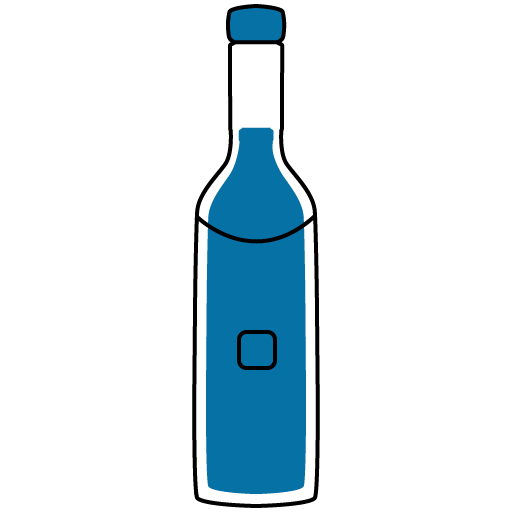
Alcohol
UNSAFE
No interaction was found/ established. Please consult your doctor before using Minoxidil+Finasteride.

Pregnancy
CONSULT YOUR DOCTOR
Please consult your doctor if you are planning to become pregnant or already pregnant before starting Minoxidil+Finasteride.
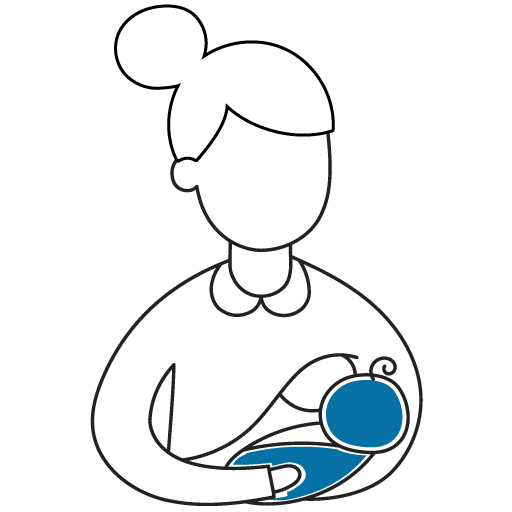
Breastfeeding
CONSULT YOUR DOCTOR
It is not known if Minoxidil+Finasteride passes into the breast milk and harms a baby during breastfeeding. Please consult the doctor before using Minoxidil+Finasteride if you are a nursing mother.

Driving
SAFE
No interaction was found/established.

Kidney
CONSULT YOUR DOCTOR
Let your doctor know if you have any history of kidney diseases. Your doctor will weigh the benefits and potential risks before prescribing Minoxidil+Finasteride. However, it should be cautiously used in patients with kidney problems and urinary obstruction.

Liver
CONSULT YOUR DOCTOR
Let your doctor know if you have any history of liver diseases or hepatic impairment. Your doctor will weigh the benefits and potential risks before prescribing Minoxidil+Finasteride.
✔️ Composition
Minoxidil 10% + Finasteride 0.2%
✔️ Uses of OTC 10% Hair Spray
Androgenetic alopecia (male/female pattern baldness).
✔️ Side Effects of OTC 10% Hair Spray
- Excessive hair growth
- Headache
- Skin irritation
- Itching
- Dermatitis
✔️ How does OTC 10% Hair Spray work?
Minoxidil + Finasteride is a combination medication designed to address hair loss in men. The balding scalp in men often exhibits small-sized hair follicles and increased levels of a male hormone that is associated with excessive hair loss and inhibited hair growth. This combination medication utilizes two active ingredients, Minoxidil and Finasteride, to combat these issues.
Minoxidil (Vasodilator):
- Minoxidil functions as a vasodilator, widening the blood vessels.
- It improves blood flow to the hair follicles, preventing hair loss and promoting re-growth.
- The result is longer, thicker hair with an increased number of strands.
Finasteride (5-alpha-Reductase Inhibitor):
- Finasteride acts as a 5-alpha-reductase inhibitor.
- It inhibits the production of a male hormone in the scalp that contributes to hair loss.
- By blocking this hormone, Finasteride reverses the balding process and prevents further hair loss.
This combination addresses the root causes of hair loss, promoting both re-growth and the prevention of future hair loss. It provides a comprehensive approach to combatting male pattern baldness. It's important to use this medication as prescribed by a healthcare professional and to be aware of any potential side effects or interactions. Regular follow-ups with a doctor are advisable to monitor progress and make adjustments as needed.
✔️ Quick Suggestions:
- Maintain a healthy diet with well-balanced meals. Ensure you are getting essential nutrients like vitamins, minerals, and proteins, which are crucial for hair health.
- Avoid overusing styling tools such as blow dryers, curling rods, and chemical dyes. Excessive use can strip natural oils from the hair, leading to hair fall.
- Incorporate regular oiling into your hair care routine. This helps in improving blood circulation in the scalp and nourishing the hair roots.
- Wash your hair regularly with a good shampoo and conditioner. A clean and well-moisturized scalp promotes healthy hair growth.
- Practice yoga and meditation to manage stress levels. High stress can contribute to hair fall, and these relaxation techniques can be beneficial.
- Schedule regular medical examinations to check hormonal profiles and nutritional deficiencies that might be contributing to hair loss.
- Monitor hormonal and vitamin D profiles, as imbalances in these areas can impact hair health.
- Avoid contact with topical Minoxidil+Finasteride with the nose, mouth, eyes, or broken and irritated skin. If accidental contact occurs, rinse thoroughly with water.
✔️ Androgenetic Alopecia
Androgenetic Alopecia, commonly referred to as male or female pattern baldness, is a form of hair loss that has distinct patterns in both men and women.
Male-Pattern Baldness: In males, androgenetic alopecia typically results in hair loss at the top and front of the head. This often leads to the classic "M" shape as the hairline recedes. The process is usually gradual and can start as early as the teenage years or early twenties. It is influenced by genetic factors and is associated with the hormone dihydrotestosterone (DHT), a derivative of testosterone.
Female-Pattern Baldness: In females, androgenetic alopecia manifests as thinning of the hair on the top and crown of the head. Unlike male-pattern baldness, women with this condition usually do not experience a receding hairline. The causes are similar, involving genetic predisposition and the influence of androgens, including DHT.
Genetic Nature: Androgenetic alopecia is often hereditary and has a strong genetic component. Individuals with a family history of pattern baldness are more likely to experience it themselves. Genetic factors contribute to the sensitivity of hair follicles to DHT, leading to the gradual miniaturization of hair follicles and the eventual thinning and loss of hair.
Role of Dihydrotestosterone (DHT): Dihydrotestosterone is a hormone that plays a crucial role in the development of androgenetic alopecia. It is derived from testosterone by the action of an enzyme called 5-alpha reductase. DHT hurts hair follicles in genetically predisposed individuals, causing them to shrink over time. This process is known as follicular miniaturization, leading to the production of shorter and finer hairs until the follicles become dormant.
While androgenetic alopecia is a common condition, its progression and severity can vary among individuals. Treatment options, including medications like finasteride and minoxidil, may help slow down hair loss and promote hair regrowth. It's recommended to consult with a healthcare professional or dermatologist for personalized advice and treatment options based on individual circumstances.
✔️ Pharmacology
Minoxidil (Vasodilator):
- Mechanism of Action: Acts as a vasodilator.
- Function: Stimulates hair growth and prevents baldness.
- Mode of Application: Topical application.
- Process: Promotes blood flow to hair follicles, ensuring adequate nutrition and oxygen supply.
- Result: Prevents hair cell death and stimulates hair growth.
Finasteride (5-alpha-Reductase Inhibitor):
- Mechanism of Action: Inhibits 5-alpha-reductase enzyme.
- Function: Reduces dihydrotestosterone (DHT) levels.
- Condition Treated: Androgenetic alopecia (male pattern hair loss).
- Effect: Prevents thinning of hair follicles associated with DHT.
- Application: Oral administration.
Combined Action:
- Comprehensive Approach: Addresses hair loss from both vasodilation and hormonal perspectives.
- Minoxidil's Role: Enhances blood circulation to nourish hair follicles.
- Finasteride's Role: Targets hormonal factors contributing to hair thinning.
Clinical Significance:
- Alopecia Treatment: Used for androgenetic alopecia treatment.
- Effective Results: Synergistic effect for enhanced efficacy.
- Prevention and Re-Growth: Prevents further hair loss and stimulates regrowth.
Minoxidil+Finasteride provides a dual-action approach, making it a valuable combination for addressing the complexities of hair loss, and offering a comprehensive solution for individuals with androgenetic alopecia.
✔️ Dosage & Administration of OTC 10% Hair Spray
Typically, the solution form of the medication is equipped with both a spray pump applicator and an extended spray-tip applicator for precise application. Here's a step-by-step guide on how to use it:
Choose the Applicator:
- The spray pump applicator is suitable for larger scalp areas.
- The extended spray-tip applicator is designed for smaller, targeted areas.
Aiming and Pumping:
- Aim the pump or spray-tip towards the bald or affected areas of the scalp.
- Pump the spray once. Each set of six sprays usually delivers one milliliter (ml) of the medication.
Application:
- After spraying, use your fingertips to evenly spread the solution on the scalp.
Avoiding Mist Inhalation:
- Take care to avoid breathing in the spray mist during application.
Hand Hygiene:
- Wash your hands thoroughly after applying the solution.
Specific Recommendations:
- Do not blow-dry your scalp after applying the product.
- Refrain from applying the product to shaved, inflamed, infected, irritated, or painful scalp skin.
Rinsing in Case of Contact:
- If the medication accidentally gets into your eyes, nose, mouth, or on broken or irritated skin, rinse the affected area with cold water.
✔️ Interaction
- Erectile Dysfunction Medications: There may be interactions with drugs used to treat erectile dysfunction, such as sildenafil. Inform your doctor about all medications you are taking, including over-the-counter drugs and supplements.
Other Considerations:
- Sun Exposure: It's advisable to take precautions against sun exposure, especially if using topical formulations, as the skin may be more sensitive.
✔️ Contraindications
Let your doctor know if you are allergic to Minoxidil+Finasteride or any of its components, including propylene glycol and ethanol (alcohol).
✔️ Pregnancy & Lactation
The use of finasteride in Minoxidil+Finasteride may have potential risks during pregnancy. If you are pregnant, planning for pregnancy, or breastfeeding, consult with your doctor before using the medication.
✔️ Precautions & Warnings
- Inform your doctor if you have a history of liver disease or urinary obstruction. These conditions may impact the use of Minoxidil+Finasteride.
- Avoid using topical Minoxidil+Finasteride if you have high blood pressure, cardiovascular disease, cardiac arrhythmia, sunburn, or psoriasis without consulting your doctor.
- Avoid smoking or being near naked flames after applying Minoxidil+Finasteride, as the solution can catch fire easily.
✔️ Storage Conditions
Store in a cool and dry place away from sunlight
⚠️Disclaimer:
At ePharma, we’re committed to providing accurate and accessible health information. However, all content is intended for informational purposes only and should not replace medical advice from a qualified physician. Please consult your healthcare provider for personalized guidance. We aim to support, not substitute, the doctor-patient relationship.




